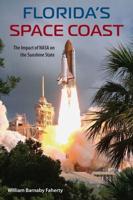Publisher's Synopsis
Radar signal processing applications frequently require an estimate of the Doppler centroid of a received signal. The Doppler centroid estimate is required for synthetic aperture radar (SAR) processing. It is also required for some applications involving target motion estimation and antenna pointing direction estimation. In some cases, the Doppler centroid can be accurately estimated based on available information regarding the terrain topography, the relative motion between the sensor and the terrain, and the antenna pointing direction. Often, the accuracy of the Doppler centroid estimate can be improved by analyzing the characteristics of the received SAR signal. This kind of signal processing is also referred to as clutterlock processing. A Doppler centroid estimation (DCE) algorithm is described which contains a linear estimator optimized for the type of terrain surface that can be modeled by a quasi-homogeneous source (QHS). Information on the following topics is presented: (1) an introduction to the theory of Doppler centroid estimation; (2) analysis of the performance characteristics of previously reported DCE algorithms; (3) comparison of these analysis results with experimental results; (4) a description and performance analysis of a Doppler centroid estimator which is optimized for a QHS; and (5) comparison of the performance of the optimal QHS Doppler centroid estimator with that of previously reported methods. Jin, Michael Y. Jet Propulsion Laboratory...









